Introduction
Welcome to the ultimate guide to transforming your viewing experience with ceiling mounts for TVs. In this comprehensive guide, we delve into the unique advantages of ceiling mounts, the different types available, and how to choose the right one for your needs. We also explore the importance of understanding VESA standards, assessing room layout and viewing angles, and provide a step-by-step guide to the installation process. Whether you're looking to maximize space, enhance your viewing experience, or simply add a touch of modernity to your space, this guide will equip you with the knowledge you need to make an informed decision.
Understanding the Benefits of Ceiling Mounts for TVs
Ceiling mounts for TVs offer unique advantages. They make watching TV while lying down easier, providing a comfortable viewing experience. Ceiling mounts also offer flexibility for changing room layouts, as they can rotate and tilt in any direction. They maximize visibility, making them ideal for public, commercial, or corporate spaces. Lastly, they help maximize floor and wall space, freeing up room for other uses. These benefits make ceiling mounts a versatile and practical choice for mounting TVs.
Types of Ceiling Mounts for TVs
There are three main types of ceiling mounts for TVs: flip-down, drop-down, and full-motion. Flip-down and drop-down mounts are ideal for high ceilings, allowing the TV to descend to an optimal height for viewing. Full-motion mounts are perfect for angled ceilings, compensating for the pitch and providing flexibility in positioning. Some mounts even offer motorized features, enabling the TV to move from a flush position against the ceiling to a viewing position via remote control. These mounts allow you to level, rotate, and adjust the TV's viewing angle for the best experience.
Fixed Ceiling Mounts
Fixed ceiling mounts are a popular choice for mounting TVs on the ceiling. They provide a secure and stable platform for your TV, ensuring it doesn't fall off. The type of bracket you choose is crucial, with some designed specifically for ceiling mounting. These brackets can be installed anywhere in a room, not just near a wall. The size of your TV will affect the size and cost of the bracket you need. There are a variety of brackets suitable for this task, including models that allow two TVs to be installed back-to-back, perfect for commercial settings.
Tilting Ceiling Mounts
A tilting TV mount is a versatile choice that offers adjustable viewing angles and ample space for cords. It can even accommodate smaller components attached to the back. This mount type helps create a clean, cordless look and prevents cord damage due to bending in tight spaces. It's preferred over a fixed mount for its reliability and ease of use.
Full-Motion Ceiling Mounts
A full-motion ceiling mount for TVs offers unparalleled flexibility. It allows the viewer to enjoy 360-degree rotation as well as a full range of tilt angle. This ensures your TV can be viewed in any direction, making it especially appropriate in places where the layout or position of the viewers may change. Moreover, a TV mounted on the ceiling is located high above everyone’s heads, ensuring that everyone can see it without obstruction. It also frees up floor and wall space for furniture, storage, or simply to create additional openness.
Choosing the Right Ceiling Mount for Your TV
Choosing the right ceiling mount for your TV involves considering the size and weight of your TV, as well as the layout of your room. There are several types of mounts, including fixed, tilting, and full-motion. Fixed mounts are ideal if you sit directly in front of your TV, while tilting mounts are better for viewing from an angle. Full-motion mounts offer the most flexibility, allowing movement in any direction. Ensure the mount you choose is compatible with your TV's VESA pattern size. Remember, the right mount should be rated for your TV's size and weight.
Considerations Based on TV Size and Weight
There are ceiling TV mounts designed to support a wide range of TV sizes, from 32 to 70 inches. These versatile mounts can handle flat panel televisions with a weight capacity of up to 175 pounds. Their adjustable height feature allows for customization based on your specific needs. This information is crucial when considering the size and weight of your TV for mounting purposes.
Understanding VESA Standards
The VESA Interface Standard is crucial when choosing a ceiling mount for your TV. It defines the distance in millimeters between the four mounting holes on the back of a TV. Most TV brands adapt this standard, with common VESA sizes being 200 x 200 for TVs up to 32 inch, 400 x 400 for TVs up to 60 inch, and 600 x 400 for larger screens. To find your TV's VESA size, simply measure the horizontal and vertical distance between the holes.
Assessing Room Layout and Viewing Angles
When assessing room layout and viewing angles for your ceiling-mounted TV, it's crucial to consider the optimal viewing distance. This distance is influenced by the size of the TV screen and the resolution of the display. The ideal viewing distance places the viewer where the horizontal angle subtended by the screen is the same as the horizontal angle captured by the camera. Moreover, the wider the visual angle (up to approximately 80 degrees), the greater the feeling of presence. Remember, the location where the display is viewed at a 40-degree view angle provides the most immersive experience.
Installation Process of Ceiling Mounts for TVs
If your home lacks wall space or if you want a TV to hang in the middle of a room away from the walls, you’ll need to use a ceiling mount. These can be bought at most major retailers, though you should check the label specifications to make sure the mount is compatible with your TV. With a few tools, a little effort, and an extra set of hands to help you hang the TV, you'll soon be enjoying a ceiling mounted TV.
Preparation and Tools Needed
If you want a TV to hang in the middle of a room away from the walls, you’ll need to use a ceiling mount. These can be bought at most major retailers. With a few tools, a little effort, and an extra set of hands to help you hang the TV, you'll soon be enjoying a ceiling mounted TV.
Step-by-Step Installation Guide
If your home lacks wall space or if you want a TV to hang in the middle of a room away from the walls, you’ll need to use a ceiling mount. These can be bought at most major retailers, though you should check the label specifications to make sure the mount is compatible with your TV. With a few tools, a little effort, and an extra set of hands to help you hang the TV, you'll soon be enjoying a ceiling mounted TV.
Safety Tips and Precautions
When mounting your TV onto the ceiling, safety is paramount. Ensure that the mount is securely fixed to prevent the TV from falling. This involves using safe, secure fixings and a sturdy bracket. If you're mounting onto plasterboard ceilings, consider installing a sheet of plywood between the beams for a strong fixing. It's also crucial to use a decent stud finder to locate the beams in your ceiling for a strong fixing. If the wooden ceiling beams don't line up with the bracket fixings, use plasterboard fixings. However, for heavier TVs, ensure at least one or two strong fixings directly into the ceiling beams.
Conclusion
In conclusion, ceiling mounts for TVs offer a versatile and practical solution for enhancing your viewing experience. From the comfort of watching TV while lying down to the flexibility of changing room layouts, the benefits are numerous. With various types of mounts available, including fixed, tilting, and full-motion, you can find the perfect fit for your space and viewing needs. Remember to consider the size and weight of your TV, the layout of your room, and your TV's VESA pattern size when choosing a mount. With careful planning and installation, you can transform your viewing experience and create a more efficient and stylish space.





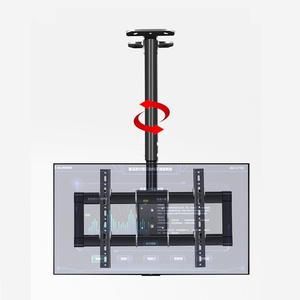

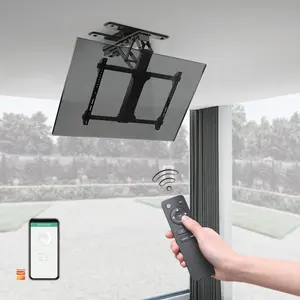





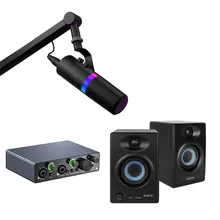


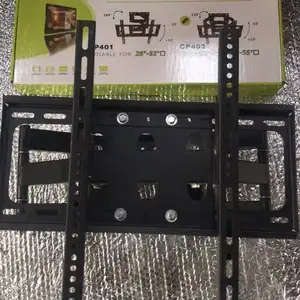

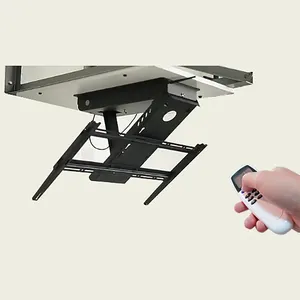
























 浙公网安备 33010002000092号
浙公网安备 33010002000092号 浙B2-20120091-4
浙B2-20120091-4